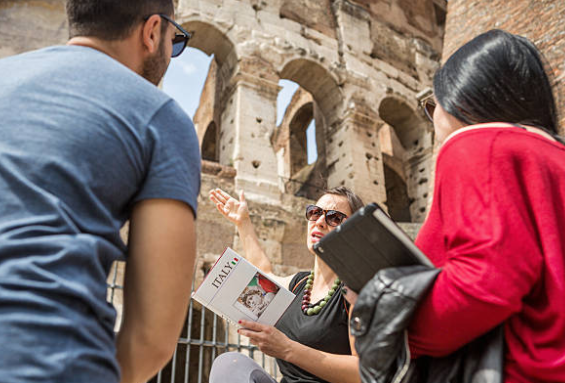
How to Give Amazing Customer Service – Examples and Tips
February 20, 2022
Profile Photo Tips for Tour Guides – The Perfect Profile Shot
March 6, 2022Everyday, tour guides and tour leaders face the challenge of how to handle cultural differences.
It is our job to educate, entertain and inspire travels and allow them to appreciate different parts of the world. In many ways, we are cultural translators ourselves. We explain things that might be difficult to understand and point out things that travelers may otherwise miss.
The other side of the coin, however, is that we as guides and presenters, first have to bridge that intercultural gap ourselves. We need to make our guests feel comfortable, respect their boundaries and communicate in a way that doesn’t offend any of their unique sensibilities.
Not an easy task, and not one that you can get right all of the time. To help you with this sometimes daunting task, here are six tips to set you up for success when handling cultural differences on tour!
-Kelsey T
Finished Watching?
In the comments, let me know how you lead tours with people from different backgrounds? Any advice or best practices to share with the community?
Transcript:
Hi there, just before we get started there are two awesome quotes that I wanted to share with you. The first is from Henry David Thoreau, he has an awesome beard so I will be right back. “Its never too late to give up your prejudices.”
The other quote comes from Saint Antoine Exupéry, the guy who wrote The Little Prince. I looked on the internet and he doesn’t have any facial hair at all. So, this is that quote as if he were a French gorilla, “He who is different from me does not impoverish me, but he enriches me.” Was that good?
Hi, and welcome back to Be a Better Guide, I am your host Kelsey Tonner.

This week we are talking about intercultural exchanges and some of the challenges that can come with that as a tour guide, or a tour leader.
Now, you have probably dealt with this before, and it’s different across every single culture, but here are six pieces of advice that will help you in those intercultural exchanges.
1) Mindset matters.
The best starting point for any intercultural exchange is one that starts up here, in the mind. If you have a mindset that is truly open, tolerant, and ready for new experiences then you are already setting yourself up for success.
Take a genuine interest in people, places, cultures, nationalities that are different from your own. That interest will help drive effective communication.
2) Respect is the universal language of service.
Customers from other cultures are often forgiving of you, the tour guide, for all kinds of reasons, all kinds of things that might be different from their own culture, or if you accidentally offend them.
That forgiveness usually ends if you are impatient or intolerant of them struggling to use your language, them having a thick accent, or maybe they have a hard to pronounce name that they have to repeat a few times.
So the key there is just have respect for those other people. Don’t treat them any differently than the respect that you show for other guests. If anything, show a little bit more. The underlined premise to delivering quality service in any culture is that you respect the individual.
3) Simplify and clarify language with non-native speakers.
When certain customers are still learning your native language, it pays to speak deliberately, and make clear transitions between sentences.
The other thing you want to do is try to avoid synonyms. That is going to help them, especially people that have a reduced vocabulary, often those synonyms are bigger words, longer words, and somebody just learning the language may not know.
4) Speak at a slower rate and slightly louder.
So this is obvious, we have all done this in intercultural exchanges, but slowing your speech down really helps. But not too much so that it’s annoying or comes across as condescending.
Speaking slightly louder really does help, but the bigger thing is to be really articulate rather than just speaking loudly.
5) Be conscious of your s-language.
North Americans and English speakers all over the world use all kinds of slang, expressions, and idioms that are really confusing to non-native speakers.
Here are some of the more common ones: ‘It was a piece of cake. The architect was flying by the seat of his pants. She hit the nail on the head. The rebuilding of the castle cost an arm and a leg.
The Prime Minister bit off more than he could chew. Queen Jennifer was such a party pooper.’ “Jennifer poops at parties? So she poops at parties, and peoples know this?” It’s sad but true, every day around the world Germans are confused by English language.
Not just Germans, people everywhere. If you took those phrases literally they are super confusing. English speakers can make heads or tails, and a few make them literal.
So there is a really good chance that you are using these idioms and slang in your story telling, and in your speeches.
So, go through and really try and cut any of those expressions out if you have a lot of non-native speakers or people coming from other cultures because that is going to make it a lot easier for them to know what you are talking about.
6) Experience different cultures regularly.
Travelling is one of the best ways to inspire curiosity, and to learn more about other people’s values, their belief systems, religions, cultures, nationalities; all of it.
Now, you don’t have to travel far to have these types of experiences. In your local town I am sure that you can find immigrant families from all over the world, or Little Italy’s, or China Towns.
Really dive in and try and get a sense of what makes that culture tick, and what their expectations might be coming on your tour.
So, six quick pieces of advice hopefully get you thinking a little bit about intercultural exchanges. In the comments below, right now, go down there and type to me how you deal with intercultural challenges as a tour leader, and share with the whole community.
Thanks so much for being here, we’ll see you next time.

